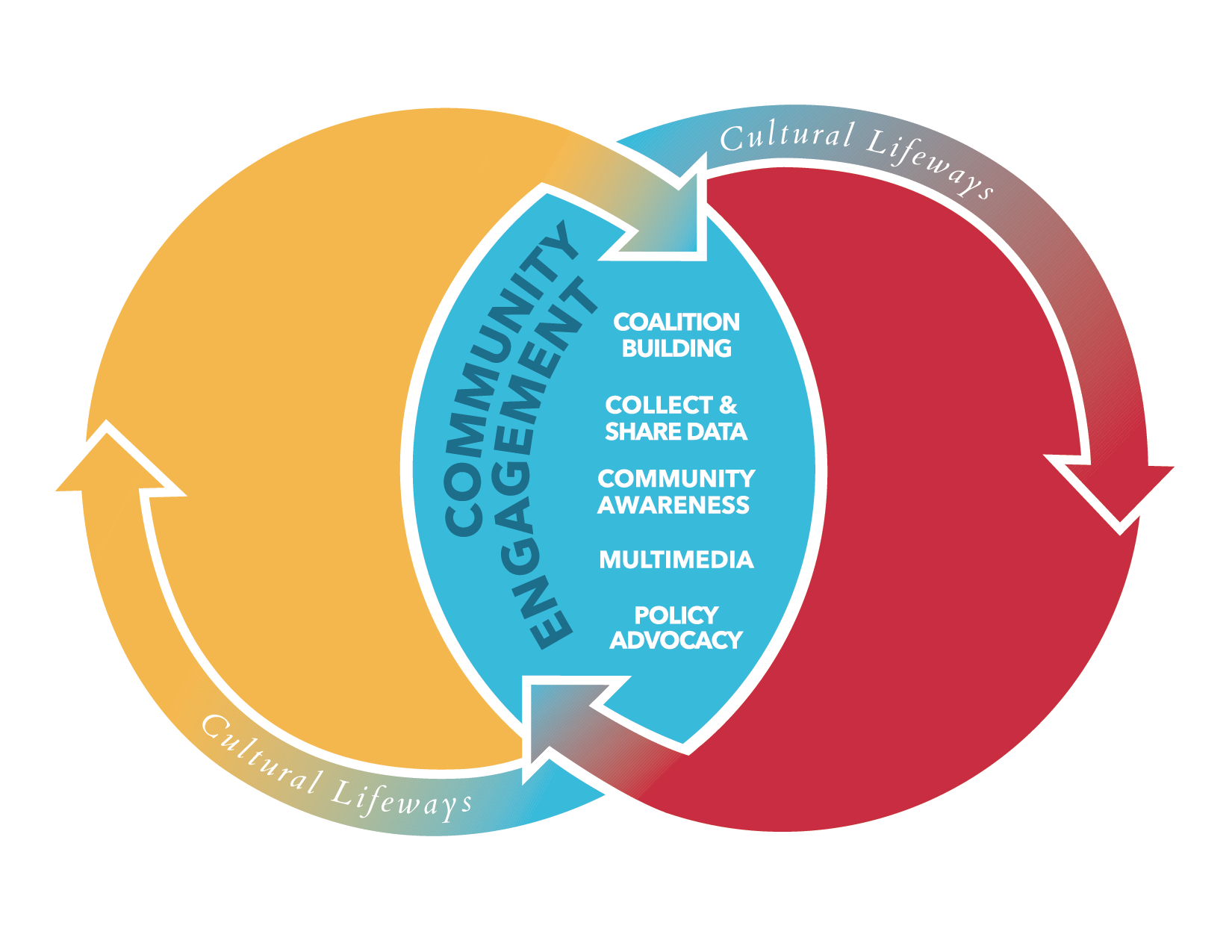
Collect Local Surveys

Gaining Support
Data drives policy. Gathering relevant data can be difficult and time consuming, or straightforward and quick, but local data can be valuable to your coalition, helping you reach goals in the community. Determine what is needed in your community and what you have the capacity (time and funds) to achieve.
Note: If you have limited resources to do a local survey, explore the Find State or National Data section for other options.
Planning
- Determine your methods for collecting the survey.
- What? Paper surveys or online surveys.
- How? Door-to-door, survey booth (at grocery store, basketball game, etc.), or online via social media or SurveyMonkey.com.
- Where? Go to all tribal communities, set up at an event where many tribal communities are represented, or focus on the largest communities.
- Who? Whoever visits your survey booth/sites. Or, you may have a specific target audience such as: youth, adults, or key stakeholders such as businesses, school administrators, elected tribal officials, etc.
- Discuss topic areas to include in the survey and specific outcomes you hope to learn.
- Does your local community support your goal, proposed change, or policy?
- How big is the problem?
- How big does the public believe the problem is?
- Draft your survey questions and possible responses.
- Invite coalition members and partners to test your survey before finalizing it.
- Collect surveys.
- Look to see what the survey results show.
- Summarize the results in a document and disseminate them.
Resources
-
Be inspired by Desi Rodriguez-Lonebear, Demographer of Data Warriors Lab, who shares her recipe for growing data warriors to reclaim tribal data sovereignty in her “Growing Data Warriors” RED Talk.
-
Explore American Indian Adult Tobacco Survey from the CDC.
-
Explore Counter Tobacco’s survey resources related to tobacco.
-
See the full process of a School Tobacco Survey in this guide School Tobacco Survey.
View School Tobacco Survey Guide Access Passive Permission Form
- Retail business observation form
-
See the full process of a Tobacco Retail Assessment in this guide Tobacco Retail Assessment.
See Retail Assessment Guide
Follow Up
- What went well ? What didn’t go well?
- What stories does the data tell about your community?
What if?
You don’t have the resources to do the type of survey you want…
-
Reach out to organizations in your community that may have the capacity, or contact the Great Plains Tribal Epidemiology Center for support. You can also use state or national data sources that exist until you can get local data.
You have few who participate in your survey…
-
If you chose paper surveys, revisit the “How?” and “Where?” from planning step 1 and try another method. If you choose online surveys try other ways of promoting it, like email blasts or other social media platforms. Also, consider adding an incentive, like a prize drawing for people who participate.
The results don’t show what you expect…
-
Discuss if the results could be inaccurate or biased (e.g. participants were not representative of the entire community, or questions were difficult to understand).
Hints
-
Start with a small survey at a location where people will come and go from (e.g. outside post office, grocery store, etc.) and ask for people’s opinions related to your goal and collect the responses on a clipboard tally sheet
-
Invite decision-makers to be involved in planning and discussions about the survey—the results they are interested in may be very different from the results you are looking for.
-
Using paper surveys is convenient, but requires data entry and analysis which can be challenging for someone without experience. To make this easier, you may opt to use one paper survey with tally marks for each person’s response. Using online survey tools like Survey Monkey or Google Forms will eliminate the need for data entry and allow the user to create reports, which will simplify analysis.
Čaŋlí Coalition
With support from research partners, we conducted a large scale American Indian Adult Tobacco Survey (AI-ATS) with 400 tribal members to learn about tobacco use in our community and opinions on smoke-free air policies. View a summary of our local survey results.
To assess how well businesses were enforcing CRST’s Smoke-Free Air Ordinance 77, we worked with high school interns to complete observations forms on the presence of no smoking signs, cigarette butts, or people smoking near public buildings. View a summary of our business observation results.
We also trained youth and young adult members to assess the “Point of Sale” environment at tobacco retail stores on the Cheyenne River Reservation to learn about the tobacco products available, prices/promotions, and advertising. You can do the same using this guide Tobacco Retail Assessment! The data gathered was used to help inform tobacco retailers about ways to avoid selling to a minor. View a summary of our tobacco retailer assessment results in Tobacco Retail Assessment.





